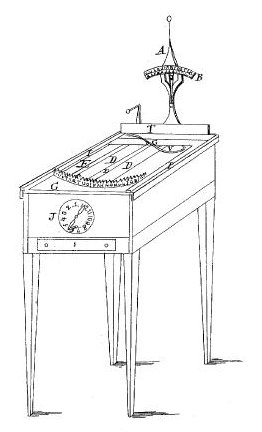The Typographer
This is one of the first forms of a typewriter invented by William Austin Burt. This was an earlier form of writing without having to hand write with a pen/pencil. To use this machine, you’d have to still use your hands to fix what you want to write. The way it works is the operator would use ink to leave an impression on the paper. Burt wanted to make a mechanism that would allow those in the office to get things done a little quicker. At the time, offices were busy and looking for a way to put down the stress of the pressure of time management. Another importance of this invention was to have neat writing to send out professionally, publicly, and personally. Burt, however, was not the first to invent a machine like this, but the first to patent it. It was the first known practical typewriter that made a lot of the people write efficiently. Other inventions weren’t practical enough to get certain jobs done. It was larger than the normal typewriter that we know today. It had three foot tall legs, and was just as wide. The aesthetics look more like a pinball machine. In order to work the typographer, the person would use a rotating dial to show the length on the paper. The machine also had upper and lowercase letters. Burt continued to hold the patent on this machinery for 14 years. Unfortunately, the patent was destroyed in the patent office fire in 1836. The fire destroyed several patents that day. The idea was lost in the fire. By that time, several other typing inventions were being tested and created.
Citations:
"Typographer (Typewriter)". En.Wikipedia.Org, 2020, https://en.wikipedia.org/wiki/Typographer_(typewriter)#:~:text=The%20typographer%20was%20an%20early,the%201836%20Patent%20Office%20fire. Accessed 16 Sept 2020.
"1836 U.S. Patent Office Fire". En.Wikipedia.Org, 2020, https://en.wikipedia.org/wiki/1836_U.S._Patent_Office_fire. Accessed 16 Sept 2020.

